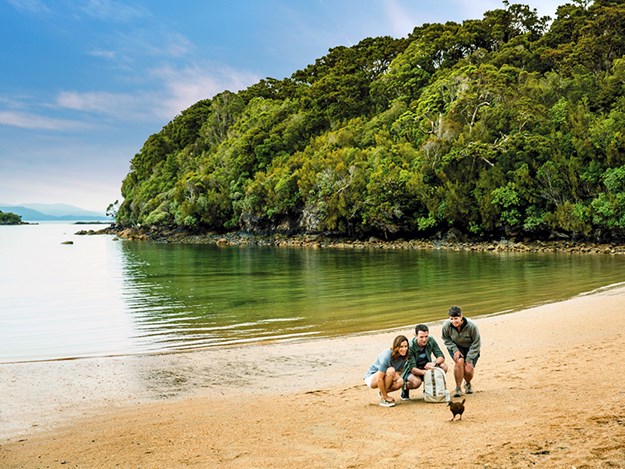 |
Stewart Island |
Stewart Island is our third-largest and southernmost island, and similar in size to Singapore. It’s accessible by a 20-minute flight or hour-long ferry trip across Foveaux Strait.
Stewart Island is sparsely populated in human terms, with just 450 full-time residents. But with an estimated 20,000 brown kiwi – just one of many native bird species living on the island – birds on the island outnumber people many times over. There is more chance to see the flightless bird in its natural environment here than anywhere else in New Zealand. The usually nocturnal kiwi also obliges by appearing during daylight hours.
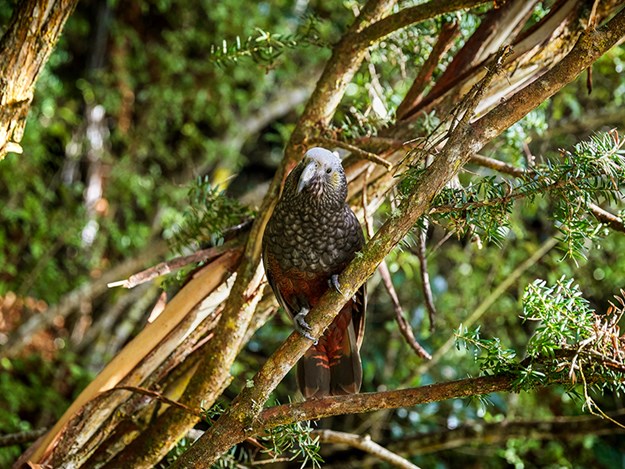 |
The island is home to our native Kaka |
Oban, the island’s only township, has a shop, a pub, plenty of holiday accommodation, and is home to most of the population.
Much of the island is in conservation reserve, forming the Rakiura National Park, an adventure playground for bird watchers or hiking, fishing, hunting and other outdoor enthusiasts.
History
Stewart Island is steeped in history, from early Māori to Scandinavian sealers and European settlers. The original Māori name, Te Punga o Te Waka a Maui or “the anchor stone of Maui’s canoe”, refers to the legend of Maui raising a great fish (the North Island) from his canoe (the South Island) and positions Stewart Island at the heart of Māori mythology.
The island owes its European name to William W. Stewart, first officer on the ship Pegasus, which visited on a sealing expedition from Australia in 1809. Stewart charted the large southeastern harbour known as Port Pegasus.
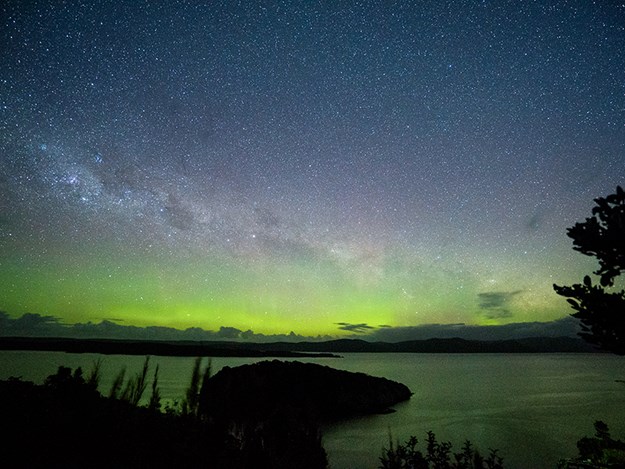 |
The Aurora Australis |
Rakiura, the Māori name for the island commonly used today, translates as “glowing skies” and refers to the brilliant sunrises and sunsets, and to Aurora Australis – the lights that are a phenomenon of southern latitudes and most visible in winter skies from March to September.
Explorers, sealers, missionaries, miners, and settlers made their mark on the island from the early 19th century, creating strong links to local Māori through marriage. Norwegian whalers who arrived in the 1920s added new threads to the tapestry of residents.
Adventure / outdoors
With numerous walks maintained by the Department of Conservation (DOC), the island has become a hiking Mecca. Stewart Island tracks vary in difficulty and length, from 10-minute strolls and short day walks up to 11-day hikes.
The most impressive hike is the 37-kilometre Rakiura Track, one of New Zealand’s nine Great Walks, which takes in early Māori settlement sites, sawmilling relics and beautiful native forest.
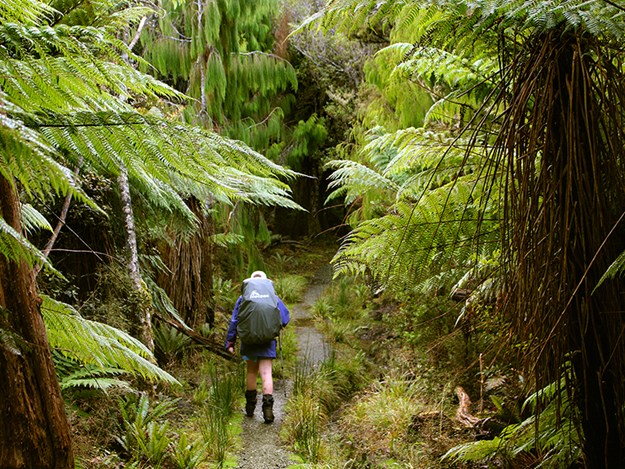 |
The lush Stewart Island bush |
More demanding walks include the Southern and the North-Western circuits, and several short-day hikes set off from Oban village.
Boat charters offer sightseeing and deep-sea fishing tours of the rich marine habitat and pristine waters surrounding Stewart Island. Sea kayaks are also available for hire, and anglers or divers are invariably rewarded with some of the world’s freshest and sweetest fish. The island’s eateries serve blue cod, salmon, oysters, mussels, crab and other delicacies caught or harvested locally.
Nature and wildlife
Ancient podocarp forests blanket Stewart Island, with rimu, southern kamahi and miro looming high above a plush carpet of fern and liana. Granite outcrops have been sculpted into natural artworks over time.
Bird watchers come from all over the island to enjoy the island’s birdlife. Indigenous species include the Stewart Island brown kiwi and robin, tui, dotterel and kaka. Seabirds abound in the coastal waters due to the rich supply of food.
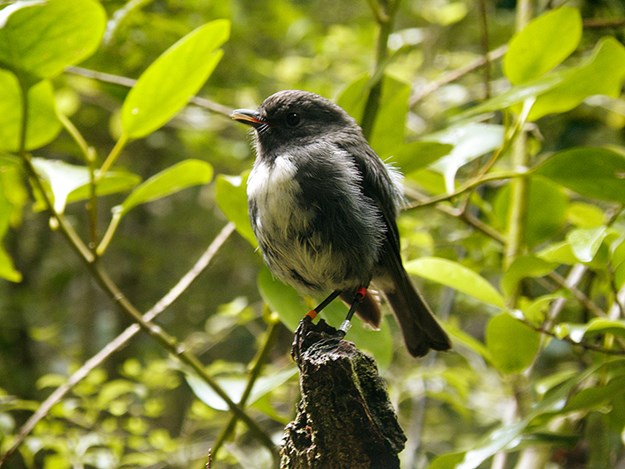 |
Robin |
Ulva Island, a seven-minute water taxi ride from Oban, is predator-free and home to many varieties of rare and endangered native birds, and other fauna and flora.
In the 1870s, the island was the site of the regional post office, which was built and manned by Charles and Jess Traill. Whenever the mail boat arrived, the Traills raised the mail flag as a signal to Stewart Islanders to sail or row across to collect their letters and parcels.
A small part of the island is still privately owned by Traill descendants, leaving the rest as an open sanctuary with public walking trails, native forest and white sandy beaches.
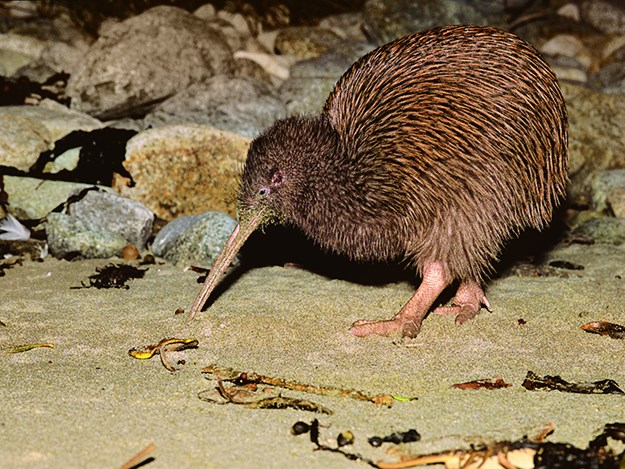 |
Brown Kiwi |
A visit to Stewart Island is not complete without a kiwi spotting adventure. There are night-time boat trips to remote beaches to see the kiwi feeding, or opportunities to see them while walking on island tracks in the daytime.
Fast Facts
- Stewart Island enjoys a microclimate that often makes it several degrees warmer than the mainland. Warm weather and very long summer days are big drawcards for cruise ships visiting the island through the summer months.
- Hundreds of people gather for the annual Waitangi Day rugby match between Islanders and Mainlanders, before heading to the beach for a giant community hangi/feast.
- The island has New Zealand’s southernmost golf course.
- Great white sharks have used the water around Stewart Island as a nursery for their pups for thousands of years.
- A quarter of New Zealand’s total population of kiwi live on the island.
- Māori have lived on Stewart Island since the 13th century, largely because of its abundance of kaimoana (seafood).
- Visitors can join in the Sunday night quiz at the local pub, made famous by Prince Harry when he visited the island.





